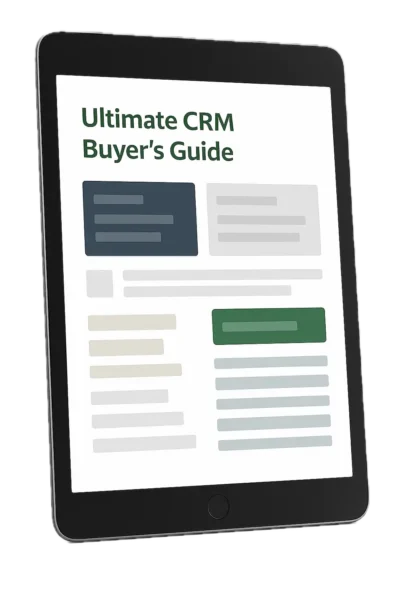If your company is new to CRM or there are plans in place to switch from a contact manager to a new CRM system, you may be wondering if you should be using the Leads area of CRM. At first blush, Leads may seem like “one more level my users have to deal with.”

After all, if you’re switching from a contact manager to a CRM system, your users already have to adapt to the idea of separate Account and Contact records. Now they have three places they need to worry about?
Years ago, it generally only made sense for a company to use Leads if there was a high volume of lead activity — for example, if large lists of unqualified leads were imported from third party list sources or from trade shows. The use of a separate Leads area was a way to keep unqualified leads from getting mixed in with qualified Accounts and Contacts. It was good data management.
If the volume of unqualified leads was low, it made more sense for users to only create Account and Contact records.
However, since most companies now generate leads via online marketing, the use of Leads makes sense even if the daily volume of new leads is in the single digits. Why?
Web Forms and CRM Leads
First, the major online CRM vendors all allow for easy generation of Web to Lead HTML. This HTML can be easily dropped onto the page or pages of a website and, via a simple visitor form submission, a new Lead will appear in your CRM system.
The Leads area of CRM systems also make it easy to automatically assign each Lead to a specific user or group of users based on, for example, the visitor’s office location.
Because a Lead record is an all-in-one contact and company record, the Lead can be easily scored, since all information is in a single, flat record. Once qualified, a user can convert the Lead to an Account/Contact and optionally to an Opportunity.
Second, the B2B landing page capability of lead generation and lead nurturing systems such as HubSpot and ActiveCampaign align most closely with the Leads area of CRM, as these systems are focused on the top of funnel and the middle of the sales funnel — areas in which the effort is still focused on converting leads to prospects.
CRM Leads and Data Duplication
The use of CRM Leads inherently increases the chance of inadvertent record duplication since contact information can be uploaded or keyed into two areas — Leads or Contacts. Duplicates can be avoided in several ways.
Duplicates can be avoided by training users on best practices, such as always performing a global search before entering a new record.
Duplicates can also be avoided through automation. For example, upon Lead conversion, a custom form can display potential matching Account or Contact records, based on pre-defined matching rules. If the Lead’s Account and/or Contact record already exists, then the Lead’s data can be merged into existing records.
If Leads enter the database via a system such as HubSpot, a check can be performed at both the Lead and the Contact level based on both a marketing system ID and an email address in order to not introduce a duplicate Lead record.
For mass list imports, third party software can be used to detect and merge duplicates on the fly.
Yes — Leads are another area of CRM for your users to manage. However, for organizations that do any level of online marketing, the use of CRM Leads is practically a necessity.




